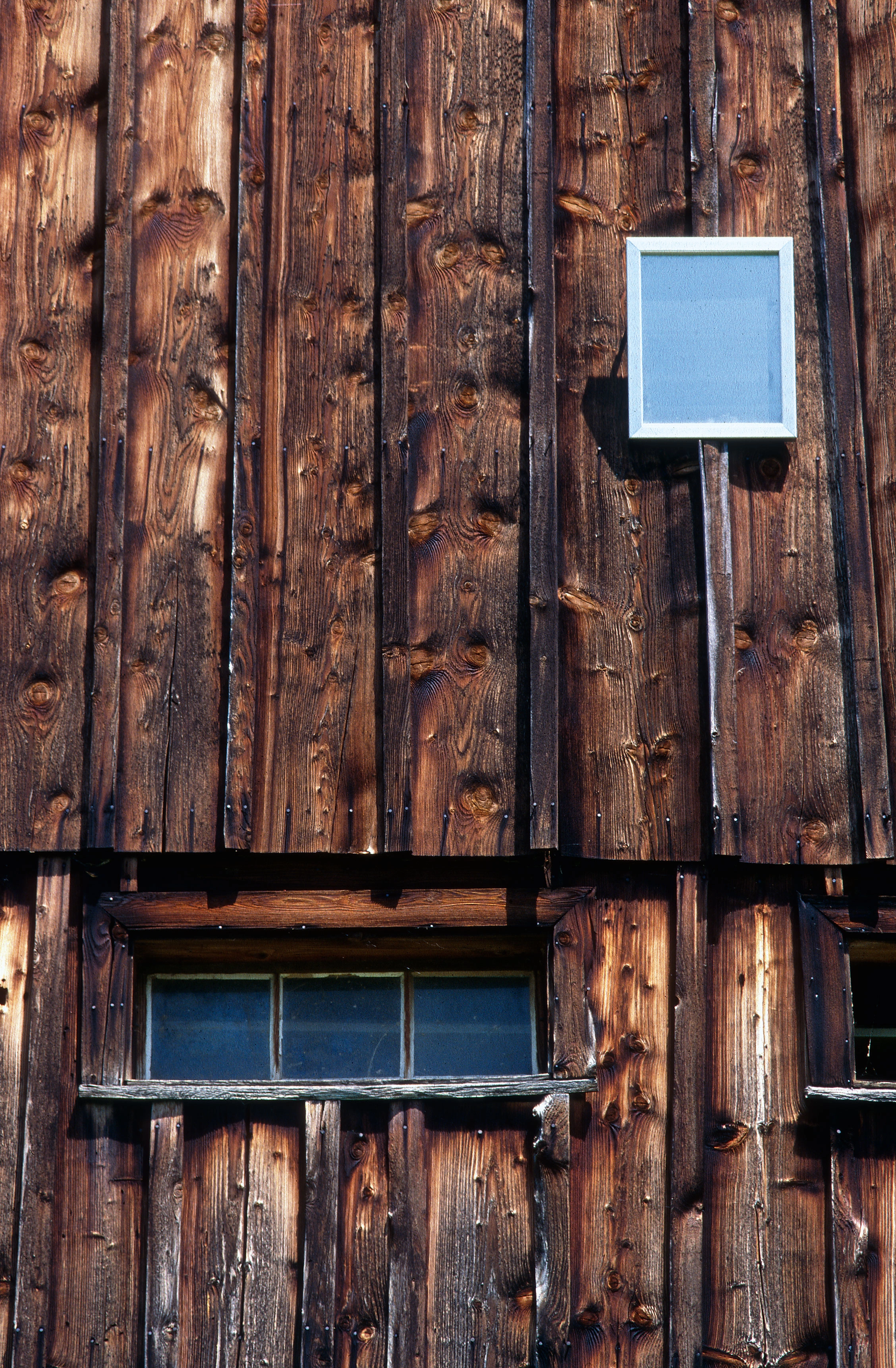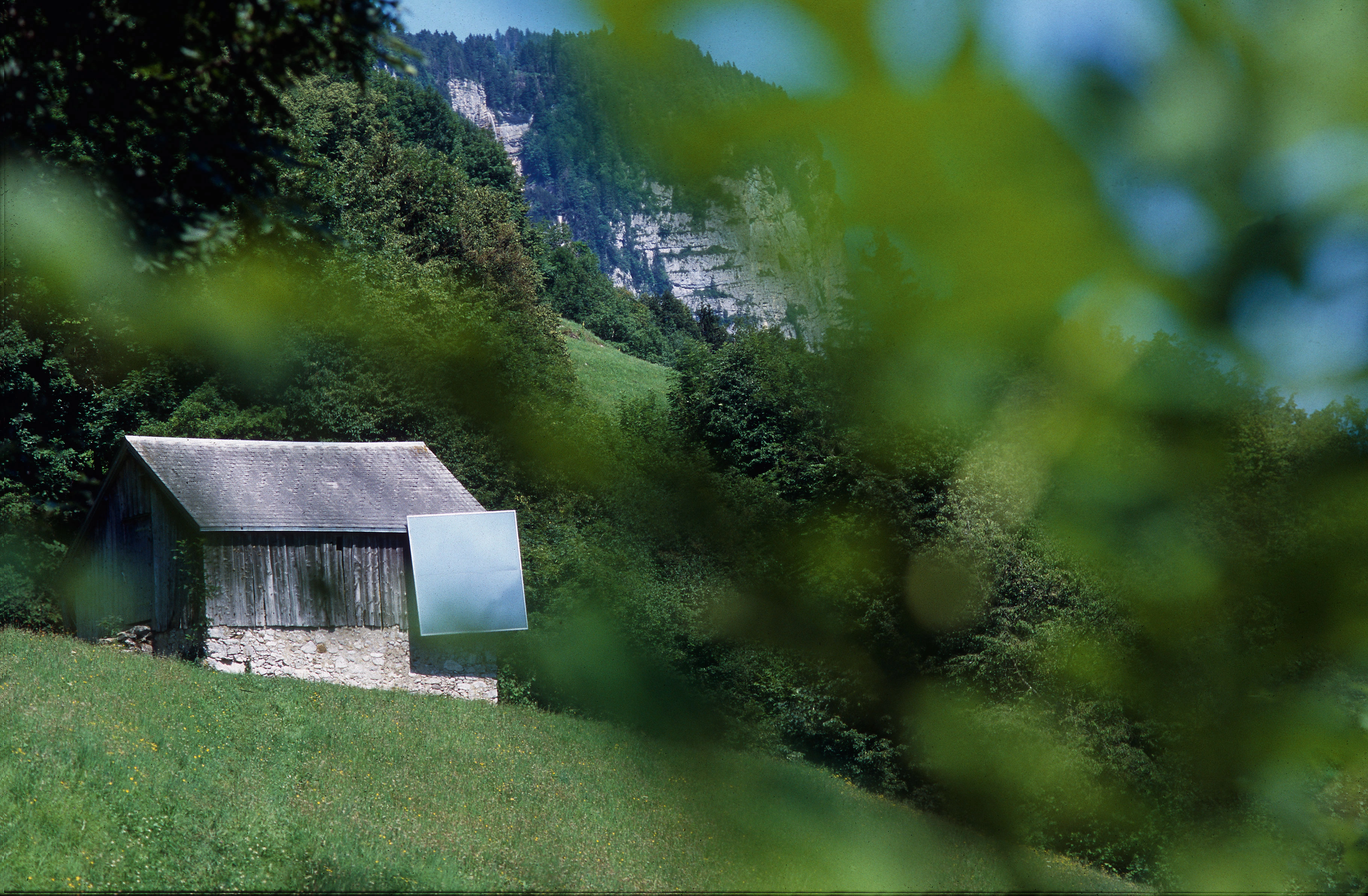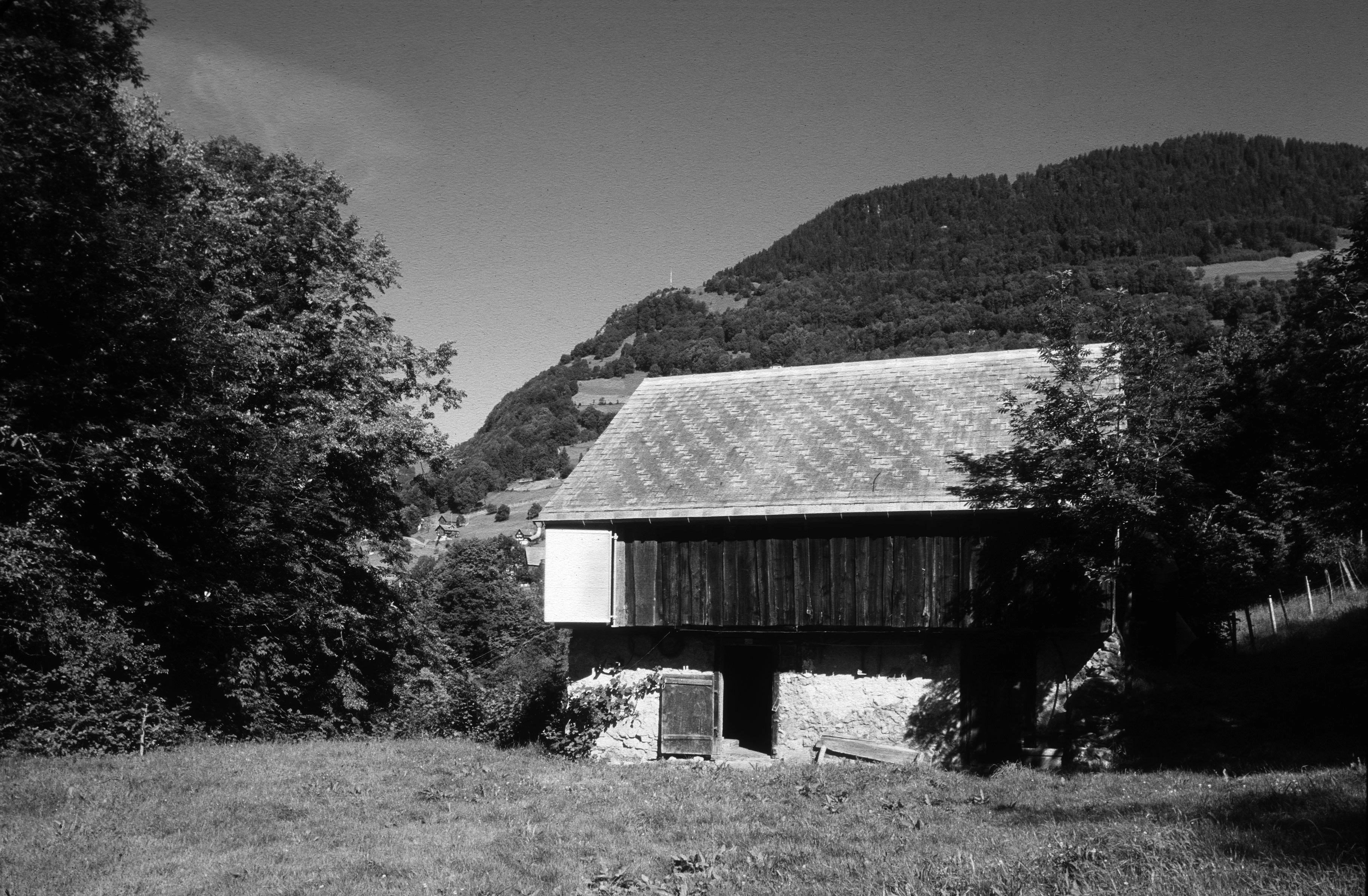As Anselm Stalder sees it, the spectrum of potential solutions should not be narrowed but, if anything, enlarged in the process of making art. Artistic production is a generative continuum across various parallel areas of interest, Stalder’s own special interest being in the visualization of the shape, form and function of perception. He looks back, yet works explicitly on an open horizon line.
In the summer of 1999, Stalder mounted aluminium panels onto three wooden buildings in Amden — panels rather like blind mirrors referring to the surrounding landscape or throwing viewers back on their own inner images. The first, permanently affixed panel on the end wall of a barn was like a traditional Alpine house blessing. In contrast, the second piece, which was also mounted on the wall of a barn and consisted of a poster panel that could swivel through 180°, evoked an alien, though non-specific urban context. The third panel on the slope below the Faren, where the artist Otto Meyer-Amden lived until 1928, was square and angled up slightly towards viewers and the sky, like a protective shield visible from afar. Affording a view of the lake, the Kerenzerberg and the great dome of the sky, Stalder’s panel drew attention to the width and breadth of the landscape and to the location of the barn on the exposed, south-facing mountainside. The building, still in use at the time of his intervention, is now rented out as exhibition space.
After the project in Amden, Stalder did some more work on two of the three pieces and exhibited them again.1 In Grosse Worte (Big Words), he divided the 300 cm² aluminium panel into two horizontally, mounting the two halves on the wall, not flat but slanting so that they formed an open space facing the viewer. The upper segment, tilted towards the viewer from above, is matte while the segment below is smoothly polished so that it mirrors the light, the viewer and the surroundings. In material, size and construction, the work features the properties of a conventional poster panel. Ab- und Zuwender (Turning To and Turning Away) mounted on the long side of the building can be swivelled through 180°. The aluminium-mounted photograph on both sides of the panel is an inkjet print of a digitally processed photograph of a closed door viewed from inside. The picture to the left is a monochrome blue with white dots marking the eyes, heart, sex and hands of an imaginary figure standing in front of the door. The same picture with the same dot matrix in mirror image is shown to the right.
The subsequent modification of Grosse Worte and Ab- und Zuwender following their first manifestation in Amden seems to have been inspired by the work of Otto Meyer-Amden. Meyer-Amden’s correspondence with his artist friends reveals that he did not think of artistic activity as a production process. To him, composition and imagery meant working on form, which in turn meant drawing on the parameters of his own life. The expectations of a potential viewer played only a secondary role. Like Meyer-Amden, Stalder sees his own work as a kind of experimental blueprint; no matter what he does, he always inquires into possible undeveloped issues. The touchpoint lies in the way Meyer-Amden interpreted and processed real space as a hypothetical entity. In Stalder’s subsequent addition of a closed door and an imaginary figure standing in front of it, I see a reflection of Meyer-Amden’s Die Weberfamilie im Nachbarhaus in Amden (The Weaver’s Family in the Neighbouring House in Amden, c. 1918). The autonomous new work, Ab- und Zuwender, contains a metaphorical rendering of the place in Amden for which the preceding version was created. Through a closed door in the background of his painting, Meyer-Amden — who lived in the Haus im Faren, near which viewers saw Stalder’s first version — shows a boy changing his clothes. In a letter to his German artist friend Paul Bollmann, Meyer-Amden writes, “The farmer and his boy have returned home in a snowstorm. The room, a farmhouse room where I happened to witness the scene at the time, has wooden walls, a blue-and-white tile stove, and a bed with a red bedspread. But perhaps I should describe what is painted: The farmer has just taken off his wet shirt and is seen standing in nothing but his trousers. His sister, clad in black, grey, and blue, has picked up a pair of cast-off shoes from the floor. The mother, wearing a light-coloured (pink and grey) check dress and largely concealed red skirts, is taking a shirt from the drawer. The boy has gone into the small room, but I have painted him from memory, along with the wall in between. Painted in the middle of the picture are the spots where he was standing moments before. In two places, where the wall takes up a lot of space, I have painted an impression of the weather at that moment, suspended in the air, just as I experienced it myself, painted by the power of a train of thought while observing the picture of this return home.”2
- Cf. Roman Kurzmeyer, “Real Space and Potential Form,” in Marie-Louise Lienhard (ed.), Anselm Stalder: No Deregulation for the Invention of Fog, exh. cat. Helmhaus Zürich, Zürich / Wien / New York: Edition Voldemeer / Springer, 2000, pp. 81–85.
- Letter from Otto Meyer-Amden to Paul Bollmann, cited by Hans Christoph von Tavel / Andreas Meier (eds.), Otto Meyer-Amden: Begegnungen mit Oskar Schlemmer, Willi Baumeister, Hermann Huber und anderen Künstlern, exh. cat. Kunstmuseum Bern et. al., Bern: Benteli, 1985, p. 32.

 Images
Images
 Info
Info

